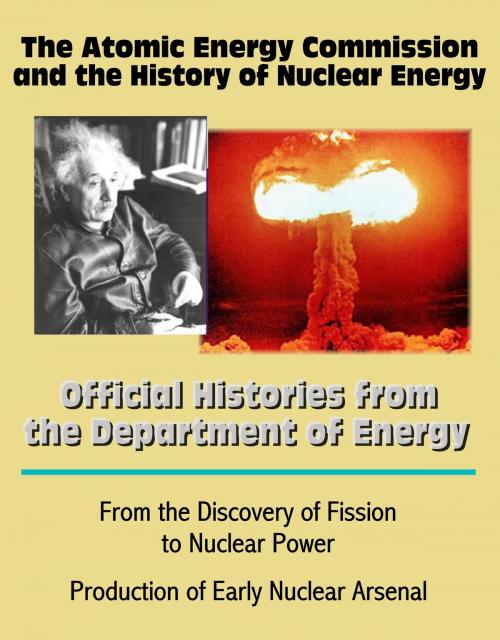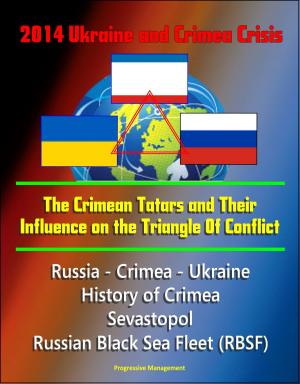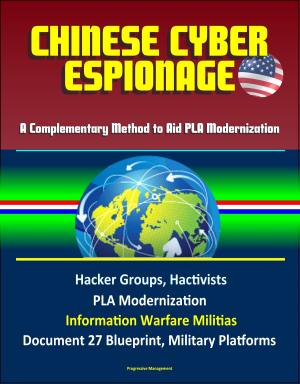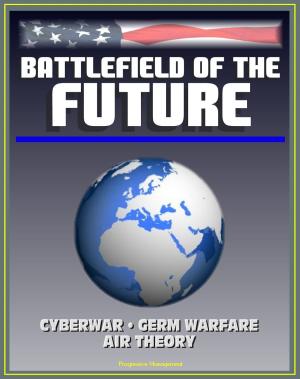The Atomic Energy Commission and the History of Nuclear Energy: Official Histories from the Department of Energy - From the Discovery of Fission to Nuclear Power; Production of Early Nuclear Arsenal
Nonfiction, History, Military, Nuclear Warfare| Author: | Progressive Management | ISBN: | 9781301207381 |
| Publisher: | Progressive Management | Publication: | March 28, 2013 |
| Imprint: | Smashwords Edition | Language: | English |
| Author: | Progressive Management |
| ISBN: | 9781301207381 |
| Publisher: | Progressive Management |
| Publication: | March 28, 2013 |
| Imprint: | Smashwords Edition |
| Language: | English |
The AEC: Almost a year after World War II ended, Congress established the United States Atomic Energy Commission to foster and control the peacetime development of atomic science and technology. Reflecting America's postwar optimism, Congress declared that atomic energy should be employed not only in the Nation's defense, but also to promote world peace, improve the public welfare, and strengthen free competition in private enterprise. After long months of intensive debate among politicians, military planners and atomic scientists, President Harry S. Truman confirmed the civilian control of atomic energy by signing the Atomic Energy Act on August 1, 1946. The provisions of the new Act bore the imprint of the American plan for international control presented to the United Nations Atomic Energy Commission two months earlier by U.S. Representative Bernard Baruch. Although the Baruch proposal for a multinational corporation to develop the peaceful uses of atomic energy failed to win the necessary Soviet support, the concept of combining development, production, and control in one agency found acceptance in the domestic legislation creating the United States Atomic Energy Commission. Congress gave the new civilian Commission extraordinary power and independence to carry out its awesome responsibilities. Five Commissioners appointed by the President would exercise authority for the operation of the Commission, while a general manager, also appointed by the President, would serve as chief executive officer. To provide the Commission exceptional freedom in hiring scientists and professionals, Commission employees would be exempt from the Civil Service system. Because of the need for great security, all production facilities and nuclear reactors would be government-owned, while all technical information and research results would be under Commission control, and thereby excluded from the normal application of the patent system.
History of Nuclear Energy: The concept of the atom has existed for many centuries. But we only recently began to understand the enormous power contained in the tiny mass. In the years just before and during World War II, nuclear research focused mainly on the development of defense weapons. Later, scientists concentrated on peaceful applications of nuclear technology. An important use of nuclear energy is the generation of electricity. After years of research, scientists have successfully applied nuclear technology to many other scientific, medical, and industrial purposes. This document traces the history of our discoveries about atoms. We begin with the ideas of the Greek philosophers. Then we follow the path to the early scientists who discovered radioactivity. Finally, we reach modern-day use of atoms as a valuable source of energy. This document also includes a detailed chronology of the history of nuclear energy and a glossary. We hope the glossary will explain terms that may be new to some readers and that studying the chronology will encourage readers to explore the resources listed in the bibliography. By doing so, you can discover first-hand our nation's efforts to develop and control this powerful technology. The Discovery of Fission * The First Self-Sustaining Chain Reaction * The Development of Nuclear Energy for Peaceful Applications * Chronology of Nuclear Research and Development, 1942-1994 * Selected References * Glossary
The AEC: Almost a year after World War II ended, Congress established the United States Atomic Energy Commission to foster and control the peacetime development of atomic science and technology. Reflecting America's postwar optimism, Congress declared that atomic energy should be employed not only in the Nation's defense, but also to promote world peace, improve the public welfare, and strengthen free competition in private enterprise. After long months of intensive debate among politicians, military planners and atomic scientists, President Harry S. Truman confirmed the civilian control of atomic energy by signing the Atomic Energy Act on August 1, 1946. The provisions of the new Act bore the imprint of the American plan for international control presented to the United Nations Atomic Energy Commission two months earlier by U.S. Representative Bernard Baruch. Although the Baruch proposal for a multinational corporation to develop the peaceful uses of atomic energy failed to win the necessary Soviet support, the concept of combining development, production, and control in one agency found acceptance in the domestic legislation creating the United States Atomic Energy Commission. Congress gave the new civilian Commission extraordinary power and independence to carry out its awesome responsibilities. Five Commissioners appointed by the President would exercise authority for the operation of the Commission, while a general manager, also appointed by the President, would serve as chief executive officer. To provide the Commission exceptional freedom in hiring scientists and professionals, Commission employees would be exempt from the Civil Service system. Because of the need for great security, all production facilities and nuclear reactors would be government-owned, while all technical information and research results would be under Commission control, and thereby excluded from the normal application of the patent system.
History of Nuclear Energy: The concept of the atom has existed for many centuries. But we only recently began to understand the enormous power contained in the tiny mass. In the years just before and during World War II, nuclear research focused mainly on the development of defense weapons. Later, scientists concentrated on peaceful applications of nuclear technology. An important use of nuclear energy is the generation of electricity. After years of research, scientists have successfully applied nuclear technology to many other scientific, medical, and industrial purposes. This document traces the history of our discoveries about atoms. We begin with the ideas of the Greek philosophers. Then we follow the path to the early scientists who discovered radioactivity. Finally, we reach modern-day use of atoms as a valuable source of energy. This document also includes a detailed chronology of the history of nuclear energy and a glossary. We hope the glossary will explain terms that may be new to some readers and that studying the chronology will encourage readers to explore the resources listed in the bibliography. By doing so, you can discover first-hand our nation's efforts to develop and control this powerful technology. The Discovery of Fission * The First Self-Sustaining Chain Reaction * The Development of Nuclear Energy for Peaceful Applications * Chronology of Nuclear Research and Development, 1942-1994 * Selected References * Glossary















